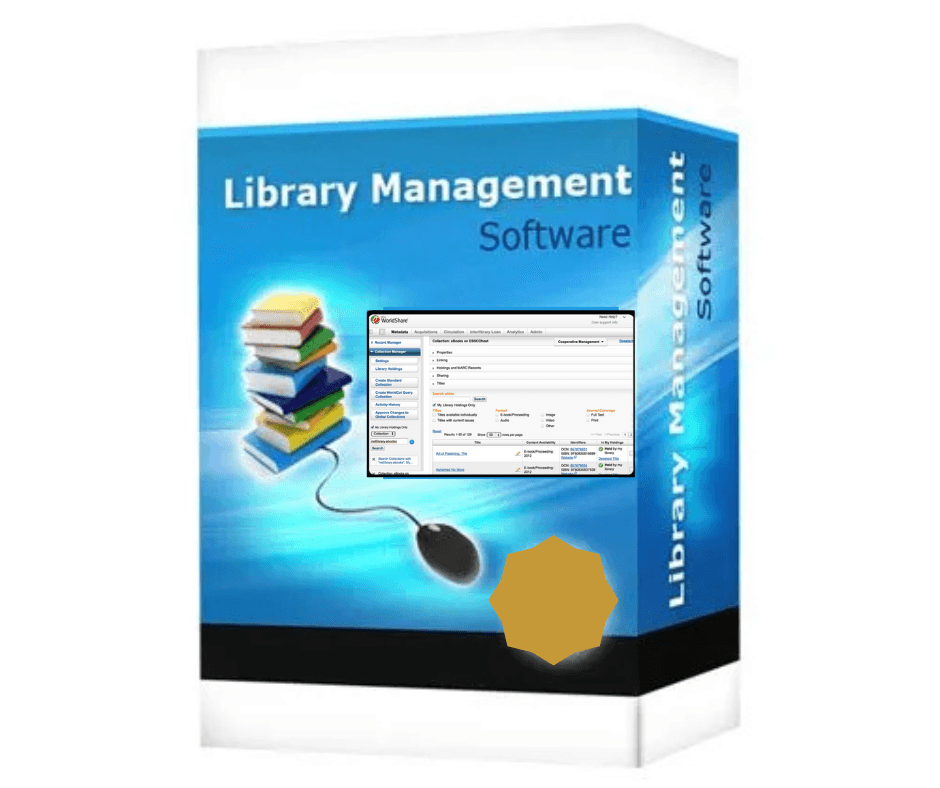Library-customized software encompasses a range of specialized software solutions meticulously designed to address the unique needs and operational workflows of libraries. These systems play a crucial role in enhancing various aspects of library management, offering functionalities and features that are specifically crafted for the library environment. The software can take the form of a fully bespoke solution developed from scratch or an adaptable, off-the-shelf library management system that has been tailored to meet specific institutional requirements.

Key Features of Library-Customized Software:
Catalog Management:
This feature is essential for organizing and overseeing the library’s extensive collection of books, journals, electronic resources, and a variety of other materials. It not only facilitates efficient categorization but also supports advanced search functionalities and comprehensive metadata tagging, making it easier for users to locate resources quickly.
Borrower and Circulation Management:
Effective management of borrower information is critical to maintaining a smooth circulation process. This component tracks user data and all loan activities, enabling libraries to manage the lending of items seamlessly. It automates processes for issuing, renewing, and returning materials, supplemented by reminder notifications for approaching due dates to enhance user compliance.
Integration of E-Resources:
In today’s digital age, access to electronic content is paramount. This feature ensures that users can easily access a wide array of digital resources, including e-books, online journals, and databases, all from a single platform. This integration simplifies the user experience and broadens the scope of available materials.
Custom Reporting and Analytics:
Customized reporting tools empower libraries to analyze various usage patterns, inventory levels, overdue item statuses, and membership trends. By allowing libraries to generate specific reports tailored to their operational needs, this feature aids in informed decision-making and resource allocation.
User Access Customization:
This aspect of the software provides tailored user interfaces for different stakeholders, including librarians, members, and administrators. It introduces controlled access levels and permissions based on individual roles within the library, ensuring that sensitive information is safeguarded while enabling functionality for those who need it.
Multilingual and Accessibility Features:
Recognizing the diverse nature of library users, this software supports multiple languages and incorporates accessibility options. This inclusivity ensures that all user groups, regardless of language or ability, can effectively utilize library resources.
Scalability and Modular Design:
The adaptive nature of library-customized software allows it to grow alongside the institution. Whether a library is expanding its physical space, integrating additional branches, or exploring new technological features, the software can be adjusted to accommodate these evolving demands.
There are various essential steps involved in developing personalized library management software (LMS):
1. Define Requirements: Understand the library’s specific needs by gathering feedback from librarians, administrators, and patrons. Essential features include catalog management, user management, circulation functionalities, and notification systems. Additional options might include digital library integration, self-service kiosks, advanced reporting, and mobile access.
2. Select Development Approach: Choose between customizing an already-existing open-source LMS, such as Koha, or building the system from the ground up for total flexibility using languages like Python or Java.
3. Plan Software Architecture: Design a scalable system with an intuitive front end using technologies like Angular or React. The back end should handle logic and database management with frameworks like Django or Spring Boot, supported by a robust database such as MySQL or PostgreSQL.
4. Develop the Software: Follow standard development practices, creating modules for key functionalities. Utilize Agile methodology for iterative development and thorough testing throughout the process.
5. Implement User Interfaces: Design a user-friendly interface prioritizing simplicity and navigation for all users.
6. Ensure Security: Implement strong user authentication and role-based access controls, encrypt sensitive information, and regularly update the software to address vulnerabilities.
7. Deploy and Train: Set up the software on a reliable server or cloud platform, and provide comprehensive training for staff and users, including hands-on sessions and support resources.
8. Maintenance and Updates: Offer ongoing support to fix bugs, optimize performance, and ensure long-term reliability.
This streamlined guide covers the essentials for developing an effective LMS.
Advantages of using customized software:
- The software reflects one’s own preferences and needs: This software is created exclusively in accordance with the needs, scope, etc., of the library or information institution. Therefore, there can be no other software more suitable for that specific library or libraries. Since one’s preferences and needs can be reflected through the use of customized software, it is able to meet all the needs of the users.
- Reliability and Performance: Since the customer software is developed after thoroughly reviewing the overall needs of a specific library or library network, the software will be reliable, and its performance (at least in terms of the needs of that library or library network) will be the highest.
- A clear understanding of the software’s workings and nature: The software is designed in consultation with librarians, library staff, and, if necessary, management and users. The software development process is carried out gradually based on mutual exchange and partnership at every stage, including the planning of the system. Due to this, the people involved in this work, especially library professionals, have a clear idea about all the details, workings, and scope of the system, which is very useful in later system management and maintenance.
- Enhancement of technical knowledge of librarians and information professionals: Since librarians and their colleagues are involved in the entire process of creating a customized library system, their technical knowledge increases. In addition to planning and designing, implementing, etc. an automated system, their knowledge of computer hardware and software, networking, and relevant technical topics increases. Later, with appropriate efforts, they can also emerge as experts in this regard.
Disadvantages of using customized software:
- High cost: The cost of developing customized software is usually higher than that of pre-retained software of equivalent capabilities because it is specifically developed for a single library or library network.
- Lack of familiarity and lack of help from others when needed: Since it is unique and unique in its nature, expert knowledge about it will naturally be limited to a small circle. As in the case of pre-owned software, a large user base has developed; many people can get information and advice on the operation of the system from close quarters, which is not possible with customer software.
- Update problems: In the case of popular and widely used pre-retained software, updated versions are released regularly, but this is not possible in the case of customer software. Its scope of use is very limited, and it is updated only when the library or library network that uses it wants it. Updating or releasing new versions is also quite expensive. For these reasons, pre-retained software lags behind in terms of updates.
Customized library software offers tailored solutions designed to meet libraries’ unique needs. It provides advanced features and flexibility to streamline operations and enhance user experiences.



